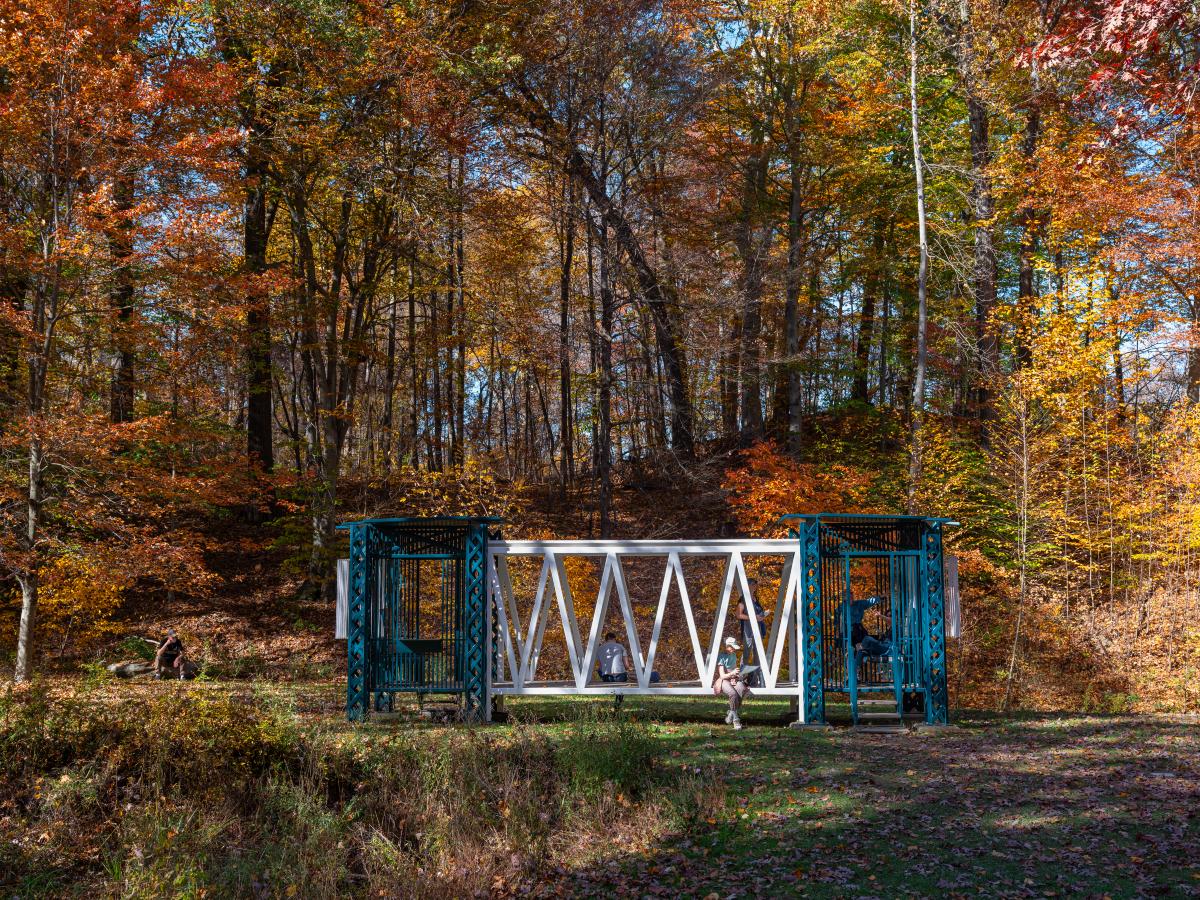On view

American, born Iran, 1939–2020
Gazebo for Two Anarchists: Gabriella Antolini and Alberto Antolini, 1992
Painted steel and wood
10 ft. 6 in. x 32 ft. 6 in. x 8 ft. 5 in. (320 x 990.6 x 256.5 cm)
Gift of The Brown Foundation, Inc., the Ralph E. Ogden Foundation, Cynthia Hazen Polsky, an anonymous foundation, gifts in memory of Elizabeth Collens, and the Joseph H. Hazen Foundation Purchase Fund
Photo by Jeffrey Jenkins
Gazebo for Two Anarchists is one of several works that Siah Armajani dedicated to twentieth-century anarchists—in this case, the brother and sister Alberto and Gabriella Antolini. The latter was imprisoned for transporting explosives intended for use in a foiled bombing in Youngstown, Ohio, in 1918. The Antolinis belonged to the Galleanists, an early twentieth-century militant group made up largely of poor Italian immigrants who sought to improve the conditions of the working class through violent measures.
The open lattice, or trusswork, of Gazebo for Two Anarchists suggests incarceration, though the elegance of the design almost belies this interpretation. The two gazebos at each end suggest the titular brother and sister, who are separated but nonetheless connected by the bridge. Each gazebo encloses a large chair with armrests that recalls both a throne and an electric chair. Facing one another, these seats seem to encourage an act of communication. The artist here transforms the gazebo, traditionally a picturesque garden folly, into a vehicle for political expression, a meditation on the paths taken in pursuit of liberty.
Armajani was himself an active member of the political movement against the Iranian monarchy before escaping to Minnesota in 1960, where he would spend much of his life. The artist was known for his politically resonant, large-scale, interactive environmental works that merge sculpture with architecture. He created sculptures, walking bridges, and reading rooms as functional places for people to use and enjoy. Throughout his life, Armajani realized sculptures for plazas, parks, and other urban landscapes, as well as for rural locations. The design of Gazebo for Two Anarchists, as with most of Armajani’s structures, was inspired by vernacular American architecture, and the steel trusswork also suggests civic engineering.
The open lattice, or trusswork, of Gazebo for Two Anarchists suggests incarceration, though the elegance of the design almost belies this interpretation. The two gazebos at each end suggest the titular brother and sister, who are separated but nonetheless connected by the bridge. Each gazebo encloses a large chair with armrests that recalls both a throne and an electric chair. Facing one another, these seats seem to encourage an act of communication. The artist here transforms the gazebo, traditionally a picturesque garden folly, into a vehicle for political expression, a meditation on the paths taken in pursuit of liberty.
Armajani was himself an active member of the political movement against the Iranian monarchy before escaping to Minnesota in 1960, where he would spend much of his life. The artist was known for his politically resonant, large-scale, interactive environmental works that merge sculpture with architecture. He created sculptures, walking bridges, and reading rooms as functional places for people to use and enjoy. Throughout his life, Armajani realized sculptures for plazas, parks, and other urban landscapes, as well as for rural locations. The design of Gazebo for Two Anarchists, as with most of Armajani’s structures, was inspired by vernacular American architecture, and the steel trusswork also suggests civic engineering.
